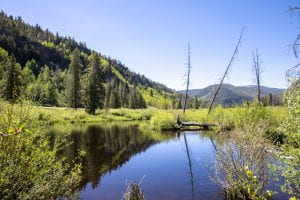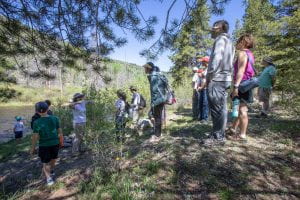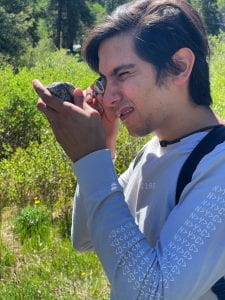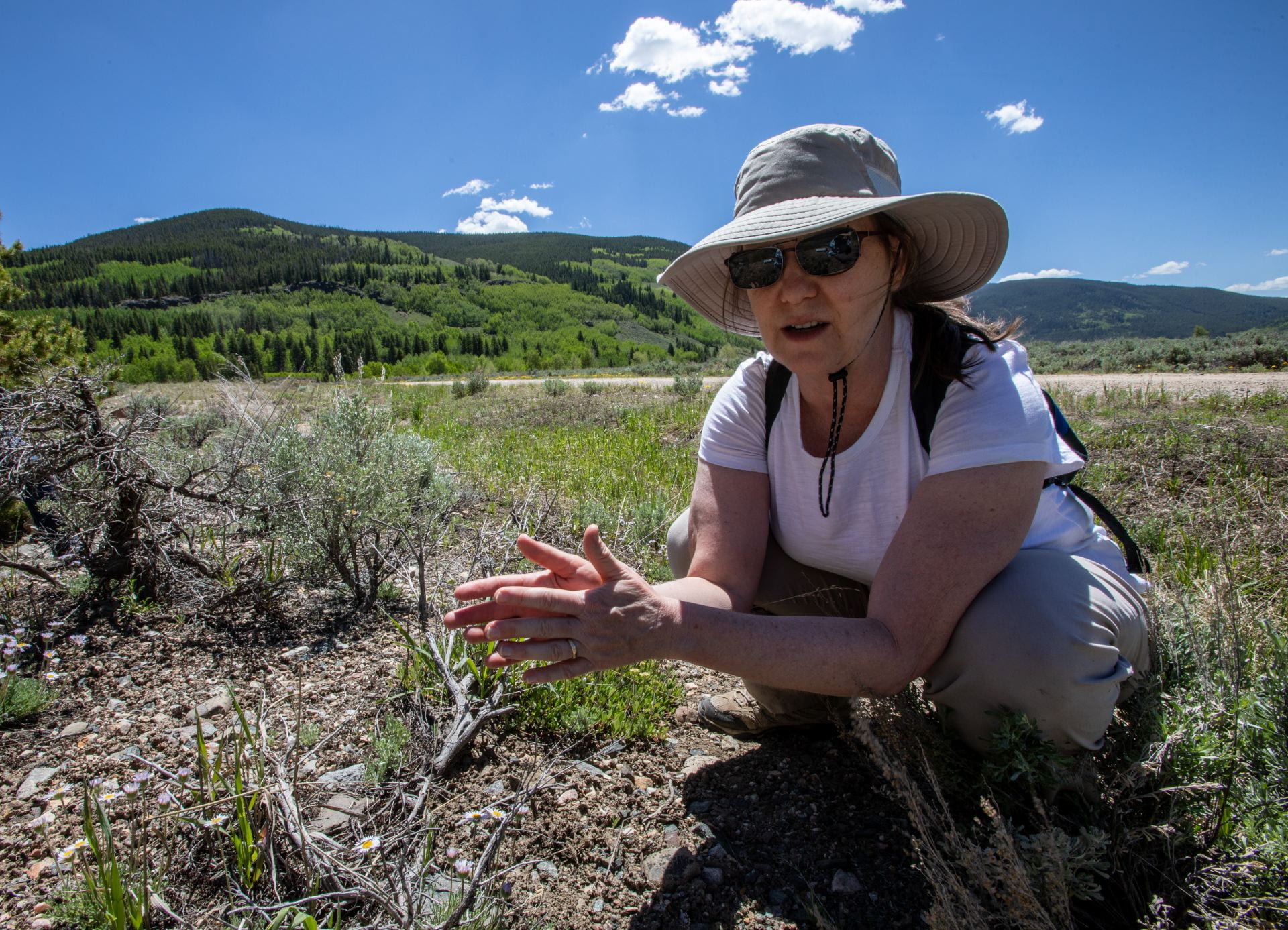By Enzo de Vita Sifontes

On the third day of our visit to Colorado, we visited the home of the largest rodents in North America and the best ecosystems engineers. Beavers. An ecosystem is the interaction between a variety of organisms, from bottom to top of the food chain, while they interact in the same physical environment. Most importantly, it was visualizing and understanding the importance of a balanced ecosystem while looking at just a small section of the Homestake Creek.
Leaving south from Minturn, past Red Cliffs, we stopped on the side of the road to hike through the wetlands constructed from the water channels beavers engineered. Meaning to look at beaver dams and lodges, it was their impact to the ecosystem that was the highlight of my day.
Starting with a tree-made dam, it supplied an insight to how the dams work, more specific, its construction of the ecosystem. Even though this dam was not made by beavers, the separation between still and running water was the first evidence to beavers’ involvement in building the surrounding ecosystem. Close to our feet we saw the home of mosquitos and small fishes, in addition to evidence of photosynthesis in action. Furthermore, we recalled that we saw moose or elk feces, which allowed us to examine that the still water serves as a drinking source for mammals, but potentially for birds as well.
Continuing our path along the wetland, we were able to see a small algal mat, which served as evidence of more organisms, but also of food source for organisms in the water. To close the ecosystem cycle, we were able to see fungi growing at the foot of multiple trees and lichens growing on a tree branch. The last portion of evidence highlights how beaver construction of the wetland system develops life to a variety of organisms and the decomposition of life.
In addition, Dr. Caroline Masiello explains how wolves, as top predators, are needed to maintain the number of organisms in the environment as moose and elk fight with beavers for food. Therefore, beaver engineering allows to develop an ecosystem that brings organisms that ultimately interact with each other that creates the balance of life.

Entering the van and continuing our drive south, we arrive to Camp Hale, home of the 10th Mountain Division. Situated in a valley near Leadville, the landscape was a beautiful site that taught us about US history, but also of the environment. The camp is evidence of glacial deposited as graduate student Emory Mckenzie explained to us the difference between angular and round rock deposition. With a small introduction to strike and dip measurement and how to use a hand lens, we were able to make assumptions of the glacial behavior that provided the landscape and rock we saw today.

To conclude, I have to add finding a beautiful metamorphic rock with folded black veins of amphibole in chlorite rich quartzite that was not only an addition to my rock collection, but it made science writer Linda Welzenbach evaluate the rock to teach me its composition. Also I found “gold.”
